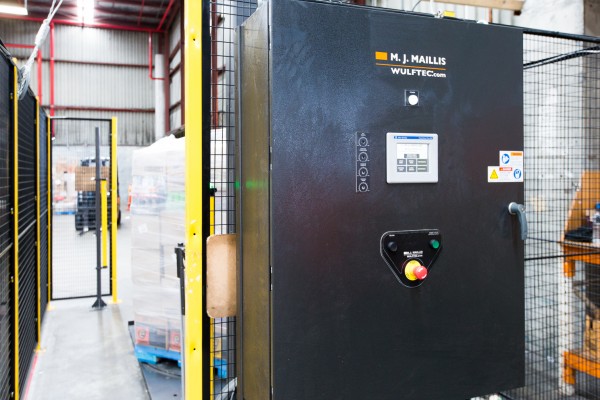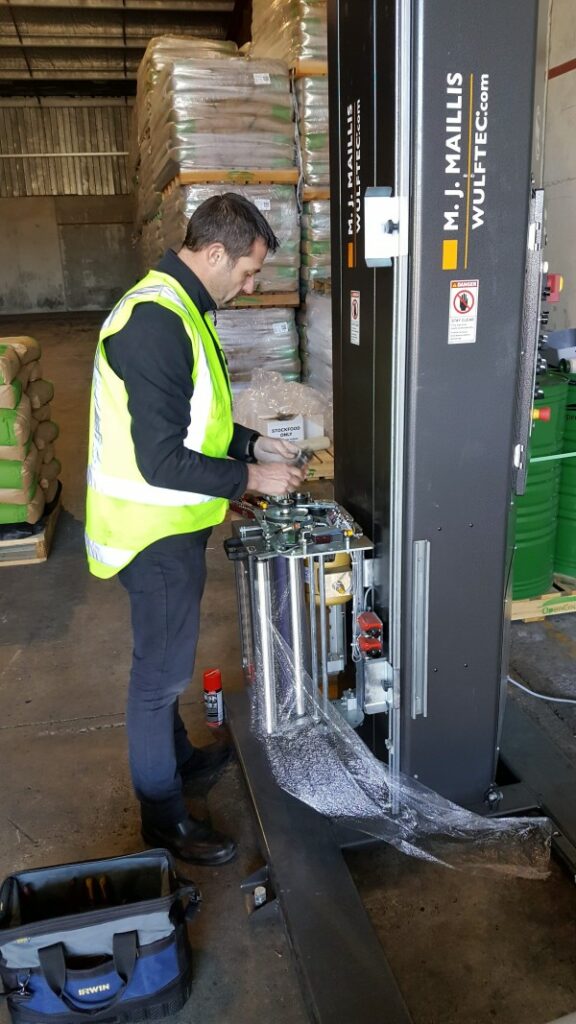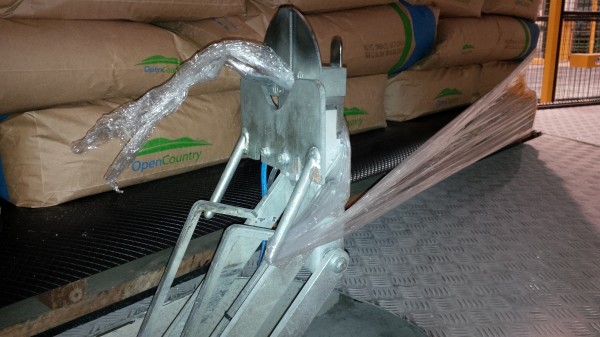Home » Unwrapping the process: Film breakage
Unwrapping the process: Film breakage

1. Pallet profile challenges: Wrap what’s in front of you
It’s a simple fact – stacking pallets often requires skill. There are many elements to consider, including keeping the heavyweight product on the base, stacking to maximise the pallet footprint and ensuring a snug, interlocked fit.
While some products lend themselves to stacking (uniform cardboard cartons) other items are notoriously difficult (garden rakes, kayaks, medieval weaponry).
Such awkward pallets being wrapped on a standard wrapper can cause regular breakage. If this is occurring, we recommend that the pallet wrapper is modified with a roping unit. This approach rolls the edges of the film, creating a strong band and overcoming load protrusions.

2. Incorrect settings: Get with the programme
A wrapper needs to be set up for both the load it is supposed to be wrapping as well as the film that is being used. One doesn’t work without the other.
When incorrectly programmed settings such as overwrap, turntable speed and film threading can have disastrous consequences. Make sure the film you are using is suited to the machine. High performance film needs pre-stretch rollers with high amounts of surface area contact to maximise the stretch. Coarse rollers will generally result in poor yield and regular breaks.
The product you are wrapping and the film being used may have changed over time. That’s why every so often it’s good to approach your wrapping operation as a blank canvas. Your friendly pallet wrapping expert can assist with getting the wrapper settings right and aligning the stars.
3. Machine clamp issues: Lock it down
Did you know that as much as 25% of film breakages are related to the clamp system on automatic wrappers? Usually these clamps are pneumatic. However some also use springs to keep positive pressure on the film when holding it.
When the wrapper starts its cycle, the film can be pulled out of the jaws. This stops the process and requires the operator to enter into the safety cell and reattach the film. This issue can relate directly to the clamps, which need to be checked regularly to ensure there is no wear on the contact surfaces and there is sufficient pressure to hold the film in place.
Once this has been checked the wrapper start needs to be investigated. The turntable or rotary arm should have a smooth steady accelerating start and the film feed need to be responsive to the demand.
4. Damaged rolls: How bumps lead to breakages
The average human hair is four times thicker than a piece of 17um machine stretch film. So it’s little wonder that wrapping issues can occur after a roll is dropped on the concrete, or a knife blade is run along the top of it.
When layers of film are impacted, they can fuse together. Roll edge damage will often be the cause of breakage – this is when the film breaks from the top or the bottom of the roll and then twists its way up or down. While typically roll damage occurs at the start of the roll it can occur at any point. If it is on the outside edge it can be fixed by using a safety slitter to remove the affected layers. It also helps if you’re using high performance film too as this is usually protected by a cardboard carton.
A good account manager will be able to demonstrate how a damaged roll can be salvaged and, as importantly, provide you with the know-how and tools to do this yourself.
5. Film flaws: Start at the source
There’s a big difference in how pallet film is made. High-speed Nano pallet wrap production lines have optical cameras that repeatedly scan the film web to detect any flaws. Only film without flaw is then wound onto rolls.
A lot of film in the market is extruded on machines that are over 30 years old. If regular maintenance is not kept up on the extruding lines of these machines, gels (un-melted resin particles) can get into the film. This creates a weak spot in the film that, while often not perceptible to the naked eye, will break immediately on being stretched. Issues like telescoping rolls, foreign matter in the film and inconsistent cling can also occur when manufacturing standards are not upheld.
Stretch film extrusion can at times be more of an art than a science. However it certainly pays to be fussy about the quality of the film – and to make sure your pallet wrap specialist knows what they’re talking about.
6. Machine maintenance: Look after your wrapper
Loose bolts, misaligned carriage doors and worn potentiometers can all cause breaking pallet wrap and it pays to keep an eye on any potential issues here.
In addition to this, breakages can cause the film to wrap around the idle pre-stretch rollers in a wrapper carriage. This can result in frustrated operators using knifes to cut the film off – which in turn can score the rollers. The scores in turn cause more breakages. It’s a never-ending circle of more and more breakage! Keeping machines well maintained will nip these issues in the bud.

Yes, pallet wrap breakage can happen. However, with the correct settings, a diligent approach and a little behind the scenes expertise you can be assured this annoying issue is kept to a minimum.